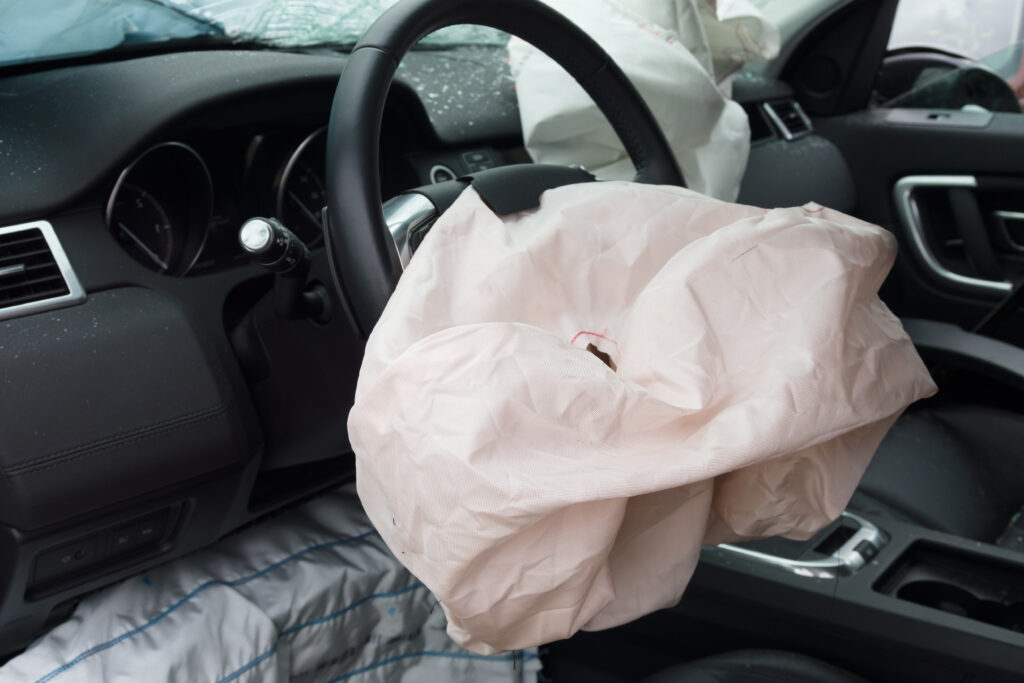
When shopping for a new car, you may have heard that a car has a five-star safety rating or passed a collision test. While you might think it’s nothing more than an advertising ploy, it’s actually based on ratings from one of two independent agencies.
By running vehicles through several different tests, these agencies can determine how well a car protects a driver and passengers in case of an accident. The results of these tests are published to the public.
By running vehicles through several different tests, these agencies can determine how well a car protects a driver and passengers in case of an accident. The results of these tests are published to the public.
What is collision testing?
The federal government has regulations that specify minimum safety requirements for motor vehicles. However, these requirements do not include collision testing.
Collision testing is meant to test vehicles beyond what federal law requires. These tests look at how well a vehicle protects a driver and passengers during an accident. They simulate the most common types of car accidents. By measuring the impact of these tests on crash test dummies, consumers can see how well they will be protected in case of an accident.
The results of those tests are released to the public. The purpose of these tests is to help consumers understand how safe cars are in an accident. They also help encourage automobile manufacturers to build safer cars.
Who performs collision testing?
Two different independent groups perform collision testing. One is the National Highway Traffic Safety Administration (NHTSA). This is a federal agency that is responsible for testing all new cars and issuing ratings.
The second group is the Insurance Institute for Highway Safety (IIHS). The IIHS is an industry group that tests vehicles and issues ratings.
Both these groups conduct independent tests that measure how well a vehicle performs in an accident. They then release the test results to the public.
What types of tests are performed?
NHTSA conducts two types of crash tests on all new cars:
- Front crash test: A test car is run straight into a concrete barrier at 35 miles per hour.
- Side barrier crash test: A 3,015-pound sled with a bumper is ran into the side of a test car at 38.5 miles per hour.
- Side pole crash test: A test car is angled at 75 degrees, then pulled sideways at 20 miles an hour into a 20 centimeter pole. The pole is aimed to hit driver’s seating area.
- Rollover resistance test: Tests how likely a vehicle will tip over while conducting a severe maneuver.
The IIHS conducts similar tests:
- Moderate overlap frontal test: A test car is run straight into a barrier at 40 miles an hour. The barrier is about two feet tall and hits about 40 percent of the front bumper.
- Driver-side small overlap test: This test is also done at 40 miles an hour, but only about 25 percent of the front of the vehicle hits the barrier. It is meant to simulate a vehicle hitting a tree or utility pole.
- Passenger-side small overlap test: Similar to the driver-side test, but conducted on the passenger side. Because passenger-side airbags are different than driver-side ones, this test helps determine if those airbags provide enough protection.
- Side impact test: This test is similar to the NHTSA side test, but is done at 31 miles an hour, uses a 3,300-pound sled, and strikes the car higher than the NHTSA test sled (to simulate being hit by a SUV or a truck).
- Roof strength test: This test puts pressure on a car’s roof to see how will it would hold up in a rollover crash. An ideal result is that the roof can handle four times the vehicle’s weight in pressure before being crushed five inches.
In addition to these tests, the IIHS conducts testing on head restraints, seats, front crash prevention detectors, headlights, and latches for child restraints.
Crash test dummies are used in both sets of tests. These dummies resemble the height and weight of an average human being. They also have joints like a human being. The purpose of these dummies is to see how a human would react during a crash test. By studying the injuries caused to the crash test dummy, researchers can see how safe a car is and determine ways to improve safety.
There are specific dummies used for each type of testing. They have dozens of sensors installed inside and are calibrated before being used in a test. After a test, the data is downloaded and then evaluated by researchers.
How do you pass testing?
Neither group issues simple pass or fail ratings. Instead, they provide more detailed results. Both groups have ranking systems to show how well or poorly a vehicle did during testing. They also allow consumers to compare the safety results of different vehicles.
The NHTSA provides a rating between one and five stars for each new vehicle tested. Five stars is the highest rating. Ratings are made available on their website. In addition, the technical data of each test is published, which allows the public to see the scientific data that backs up their rankings.
IIHS uses a different set of ratings. Most tests are ranked using a four-level ranking system (good, acceptable, marginal, or poor) or a three-level ranking system (superior, advanced, or basic). Ratings on each vehicle are made available for consumers on their websites. There are also detailed explanations about each test. In addition, they provide videos of all tests they conduct.
By reviewing the test results from both the NHTSA and IIHS, consumers can understand how safe their car is and where there might be problems. These test results create more informed consumers and help influence automobile manufacturers to build safer vehicles.
Car damaged in a collision? Contact us today to fix your car!
If your car was damaged in a collision, contact us today to get your car looking and running like new! We’re experts on collision repair, so don’t hesitate to call us at (305) 908-5548 or contact us online to schedule an appointment.
